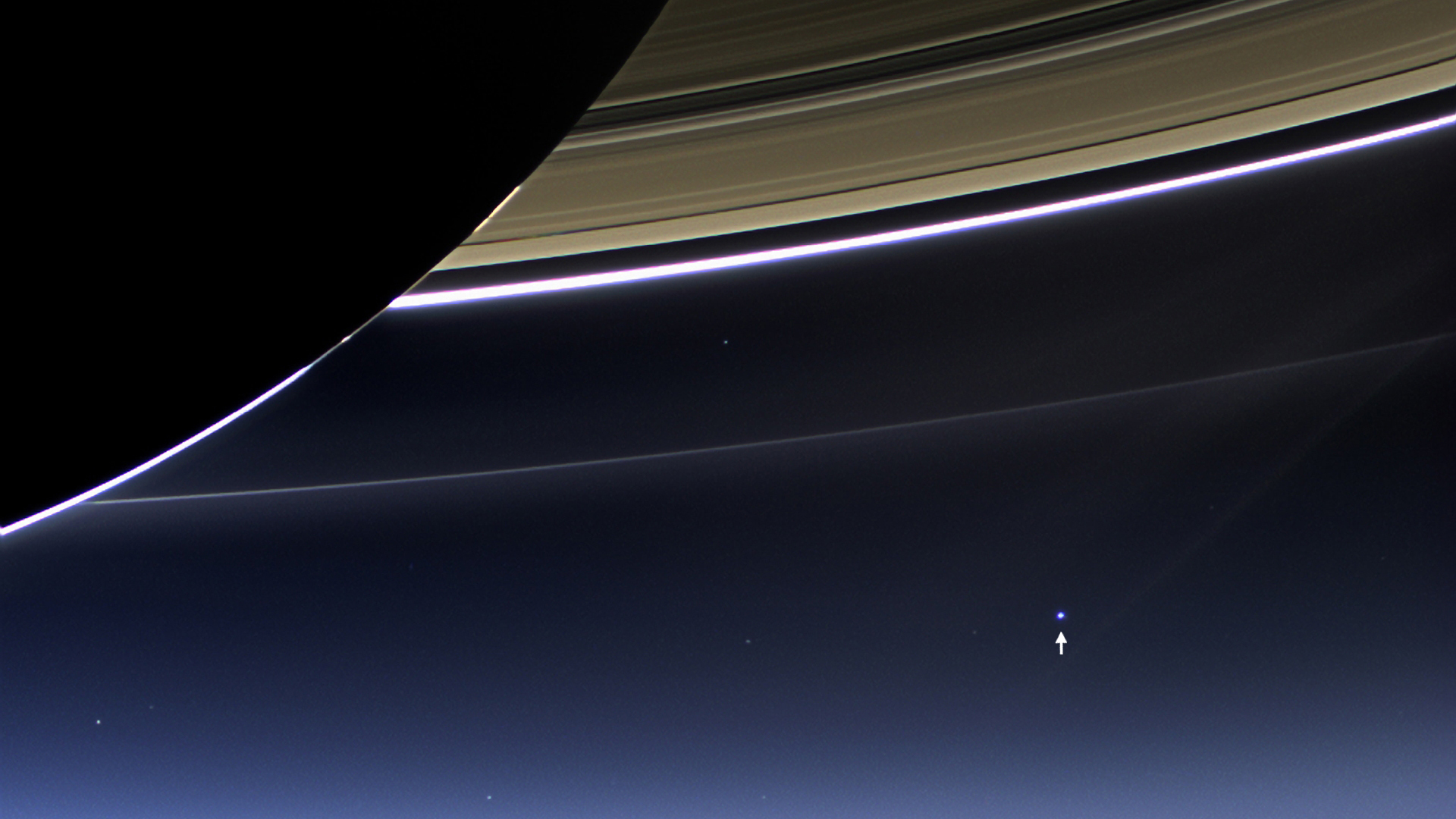Carl Sagan Reflects On The Pale Blue Dot
A new image from NASA’s Cassini spacecraft features Earth as a speck, recalling our planet’s first portrait taken from the outer solar system more than 20 years ago.

In this image, from July 19, 2013, NASA's Cassini spacecraft captured Saturn's rings, Earth (see arrow), and our moon (a faint presence off to Earth's right) in the same frame. Credit: NASA/JPL-Caltech/Space Science Institute
Last week, NASA released an image (above) that reminds us of our humble existence: In the foreground, Saturn’s rings blaze across the frame, while a pinprick Earth glows blue in a cosmic abyss, nearly 900 million miles away.
The image—which combines pictures taken by the Cassini spacecraft that used red, green, and blue spectral filters—is only the third portrait of Earth ever captured from the outer solar system (which means, beyond the asteroid belt). Cassini also snagged the second one, visible in this panorama of Saturn (a composite of 165 shots). Earth is a speck to the left, above the planet’s brighter main rings.
Earth’s first portrait surfaced more than 20 years ago, courtesy of Voyager 1. In that historical shot from 1990, Earth figures as a “pale blue dot,” barely perceptible against a ray of scattering light (see below). In 1994, Carl Sagan, an experimenter for the Voyager 1 and 2 spacecraft, chatted with SciFri about first seeing that dot. “I thought, that’s us,” he said. “That’s our world. That’s all of us—everybody you know, everybody you love, everybody you ever heard of lived out their lives there, on a mote of dust in a sunbeam.” Listen to the conversation in the podcast below.
The scene Sagan describes:

Julie Leibach is a freelance science journalist and the former managing editor of online content for Science Friday.